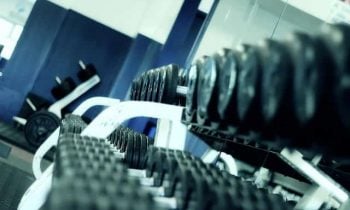When starting to exercise, it can be easy to give into pressures that suggest you need the latest gear, to pay for a class in the latest trend, or to hire a trainer who knows the latest craze inside and out. There is also a lot of pressure in the fitness industry to create increasingly complex workout routines that require consumers to spend large amounts of money. If you genuinely enjoy the trendier or more expensive exercise routines, then there’s no issue if you want to spend money on it. But if you’re just a person over the age of fifty looking to get in shape, and you don’t want to spend a lot of money on it, then thankfully there are alternatives.
The old-fashioned bodyweight routines are still an amazing way of working out, practiced by bodybuilders, sprinters, and rock climbers around the world, to name a few types of athlete who swear by adding bodyweight exercise to their routine. None of these people exclusively use bodyweight exercises, but they are professional athletes and you are not. It is perfectly possible to be very fit and healthy by only doing these bodyweight exercises.
Crunches and sit-ups.
Why do them? Crunches and sit-ups train your abdominal muscles, building strength into your core and giving you better balance and flexibility.
For beginners, start with your back flat on the ground and raise one knee to your chest, sitting up a bit to meet it. Return to position and repeat with the other knee. They don’t need to fully touch, but aim to get as close as possible.
Progress onto full crunches and full sit-ups.
For pros, try and challenge yourself to do full sit-ups without putting your arms behind your head.
Caution: This exercise folds your back a bit, so if you have weak bones or joints, don’t sit up, just lift your legs without raising your bum off the ground and draw your knee towards your chin.
Squats.
Why do them? Squats exercise your legs and back, giving you full rear chain strength and making walking and lifting things easier.
For beginners, take a house squat position. This is where you stop before your thighs are horizontal.
Progress onto squats below horizontal.
For pros, try squatting as close to the floor as you can, and practice with your feet closer together and further apart, to develop balance.
Caution: This exercise is challenging to your hips. If you have hip or knee problems, stick with house squats.
Pushups.
Why do them? Pushups exercise your chest and abdomen, making you more able to move yourself around and carry weight.
For beginners, start using a sturdy table or shelf at about chest height to support your hands and pushing away from it. You can also rest on your knees instead of your toes as you push up.
Progress onto full, extended pushups from the floor.
For pros, try and push yourself off the ground as you complete a pushup, or even to clap in between them.
Caution: Pushups are very hard on your wrists and hands. If you have arthritis in your wrists and hands pushups are not advised.
Dips.
Why do them? Dips strengthen your back and triceps, making your balance better and your posture more comfortable.
For beginners, pick a sturdy chair and sit on the ground with your back to it. Put your hands on the back of the chair and lift your weight up into your feet, so you’re squatting. Put as much weight as you can into your hands and try and use your arms to move your body up and down.
Progress onto putting as much body weight as possible into every dip.
For pros, try and fold your legs so they come right off the ground as you do your dips!
Caution: This exercise is not good if you aren’t flexible. Try and stretch your arms and shoulders over a few weeks to ensure you are flexible and comfortable before attempting this exercise.
Stepping.
Why do it? Stepping is a great way to do some cardio without putting much pressure on your body, or using a machine.
For beginners, just try walking up and down steps slowly, putting all your weight into the supporting leg.
Progress onto moving faster.
For pros, try sprinting up and down stairs, or skipping every other step so your strides are longer.
Caution: Stepping can be challenging for people who don’t have a good sense of balance. Use a railing if you feel unsteady.


 GYM workout
GYM workout Caloric Intake for Over 50s
Caloric Intake for Over 50s Vitamin D for Over 50
Vitamin D for Over 50 Magnesium for Over 50
Magnesium for Over 50 Bodyweight exercises
Bodyweight exercises